Alternative medicine offers many options for the treatment of varicose veins in the legs with folk remedies. Ointments, tinctures, compresses, baths and dressings based on herbs, bee products, chemicals and elements are used for this purpose.Many prescriptions do not have any contraindications, but you should consult a phlebologist before using any method.
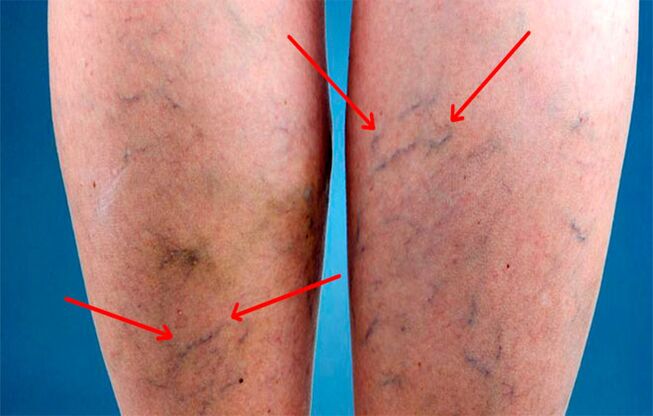
Ointments
An effective folk remedy for varicose veins in the legs are ointments made from herbs such as wormwood, horse chestnut, cabbage, garlic, Adam's apple, Kalanchoe, celandine. Mainly vegetable oils (olive, castor, sunflower, cotton) and animal oils are used.
Cabbage
White cabbage has been used for hundreds of years to treat varicose veins in the legs. The popularity of the method is due to its availability and the lack of contraindications to treatment. To compress, take the dense leaves and beat them with a kitchen hammer or roll them with a rolling pin until the juice appears. External leaves (green) do not fit.
On one side, cold-pressed vegetable oil (sunflower, olive, castor) is applied to the leaf and applied to the inflamed area. Secure with a tubular bandage. Compress is done at night. The course is 30 days.

You can lubricate cabbage leaves with honey instead of oil. You can also apply a cream of calendula flowers on cabbage leaves. To prepare it, take a glass of animal oil. The best choice is marmot or badger, but domestic pork or beef will do it. Melt the oil in a water bath and add 2 tbsp. l. crushed calendula flowers. Boil for 5 minutes, then strain hot with gauze.
Cabbage leaves are soaked in boiling water for 10-15 seconds, cooled and ointment is applied. Apply a compress to the inflamed area, cover with a round tube bandage and leave overnight. Treatment is carried out for 2-2, 5 months (until permanent improvement). The cream not only reduces the appearance of varicose veins, but also prevents possible complications.
Gil
If you do not have time to prepare an ointment for varicose veins with your own hands, you can use a quick and proven method. To do this, add a little purified water from the blue clay (until a thick creamy consistency). Apply the mass on a thick layer (1, 5-2 cm) on the affected areas and cover with a towel. The duration of the procedure is 2 hours. The course is 1-1, 5 months.
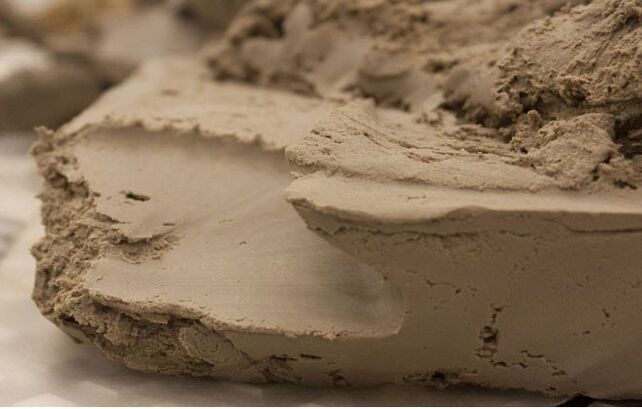
Kalanchoe
Kalanchoe (Kalanchoe) is a medicinal plant with a strong anti-inflammatory effect. It is used in traditional and alternative medicine, as well as for the treatment of varicose veins with folk remedies at home. This miraculous ointment based on this plant eliminates puffiness, eliminates inflammation and pain, improves the appearance of the skin.
To cook you will need:
- 50 q medical Vaseline;
- 50 g lanolin (animal wax);
- 50 q Kalanchoe juice.
Mix all ingredients well to obtain a homogeneous mass. With severe pain, it is recommended to add 1 ampoule of anesthetic to the composition. Store in a glass bowl in the refrigerator. The ointment is applied to clean washed skin 2-3 times a day (you can wipe with alcohol or vodka). It is not necessary to apply a bandage and wrap the affected areas. The course of treatment is 2-2, 5 months.
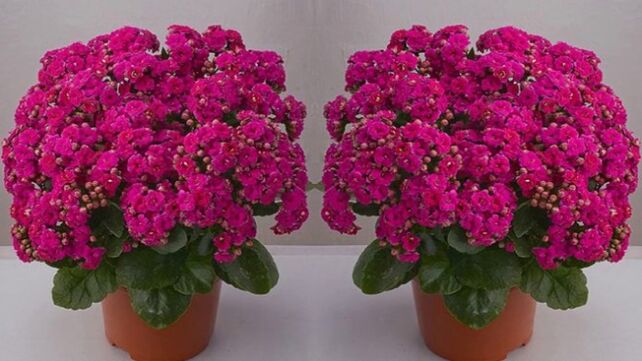
1 more recipe. Put half a cup of butter in a glass jar and keep at room temperature (until soft). Add 50 g of squeezed Kalanchoe juice and mix well. Instead of oil, you can use domestic animal fat, and instead of vegetable water, you can use the crushed mass of stems and leaves (80-100 g).
The ointment is applied to burdock (or cabbage) leaves, first washed and cooled with hot water and applied to the affected area. From above, the compress is fixed with a round bandage and insulated with a cloth. It is better to apply the ointment at night. The course of treatment is 2-2, 5 months.
Kalanchoe-based mixtures may cause a slight burning sensation (itching, tingling). If there is severe discomfort and pain, then treatment should be stopped and another method should be chosen.
Tinctures
Another popular folk remedy for varicose veins in the legs are tinctures based on herbs and bee products. The most effective of them are tinctures and infusions of horse chestnut, Kalanchoe, lilac flowers, geranium, garlic, onion peel.
To prepare a tincture of Kalanchoe, take a glass jar of the required volume, fill it halfway with the crushed mixture of leaves and stems of the plant, and top with vodka. Insist in the dark for 1, 5-2 weeks.
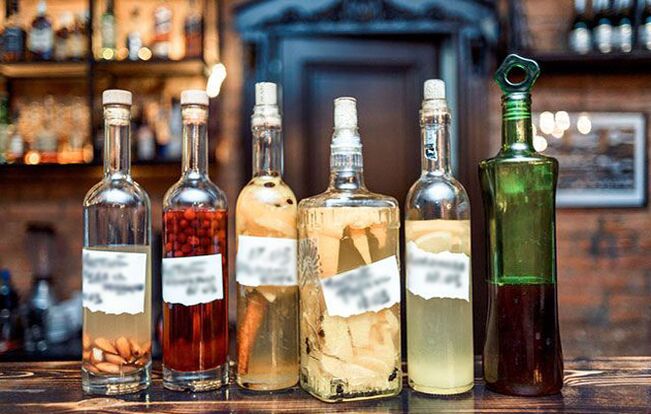
To enhance the effect, you can add white acacia flowers or flowers and leaves (larkspur) to the tincture. Inflamed veins are moisturized with the finished product 2-3 times a day. The course is 2, 5-3 months.
Oils
Folk remedies for the treatment of varicose veins include sage, cypress, geranium, black cumin, immortelle, lemon, etc. such as essential oils are popular. They are used in two ways. You can add them to the water while taking a bath, which will help eliminate swelling and strengthen blood vessels. They are also added to massage cream for anti-varicose massage.
garlic
Garlic, which has an anti-sclerotic effect, is a reliable tool for restoring elasticity in varicose veins and strengthening the vessel walls. It is used for the prevention and treatment of all stages of the disease in the form of compresses, tinctures and mixtures.
To make a garlic compress, you need 1 medium head (about 50 g) and 100 g of natural butter (can be replaced with internal pork fat). It is better to use white peeled vegetables, blue (purple) garlic burns more.
Before going to bed, the resulting ointment is applied to the inflamed veins, wrapped in a tight cloth and fixed with a round bandage. In the morning, the remnants of the compress are washed off with water. The procedure is repeated every day for 3-4 weeks.
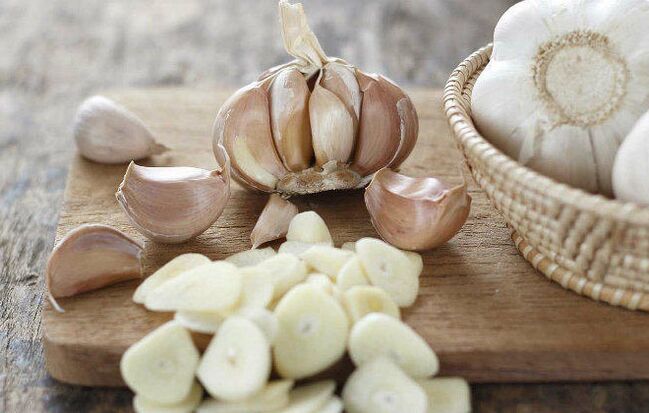
Effective folk remedies include oral administration of garlic with honey. To do this, grind 300 g of garlic in a gruel and put in a glass jar. Add 400 g of natural honey, mix and keep in the refrigerator for 2 weeks.
When the mixture is brewed, take 1 tbsp. l. before meals (breakfast and lunch). The course is designed for 4 weeks, after which it is necessary to take a break for 1, 5-2 months and repeat the treatment. The prepared mixture can be stored in the refrigerator for up to 35 days.
Linen
Compresses with flaxseed oil have a good effect in the early stages of VRV. They help to get rid of congestion, tone the walls of blood vessels and improve blood circulation. Gauze soaked in oil is applied to the inflamed areas, covered with adhesive film and fastened with a circular bandage. The compress is applied 3 times a week for 2-3 hours. As a medication to prevent VRV, 1 tsp of flaxseed oil should be taken. on an empty stomach
Compresses
The widespread use of compresses in the treatment of varicose veins with folk remedies is associated with their effectiveness, availability and safety. Most of them are allowed to use during pregnancy and lactation.
The disadvantage is that the individual characteristics of the skin or the large amount of fat can prevent the healing substances from fully affecting the vessels. They are used as adjuvant therapy in conjunction with basic treatment.
tomato
An effective remedy for varicose veins is green tomato compresses, which are recommended for use in exacerbations of the disease. They thin the blood, eliminate inflammation, relieve pain. To make a compress, tomatoes should be cut into circles and applied to problem areas. Wrap with foil and secure with a round bandage. The duration of the procedure is 3-4 hours. The course of treatment is 3-4 weeks. You can replace the compresses by rubbing them with apple cider vinegar.

Chamomile decoction
Treating varicose veins at an early stage will help with the use of chamomile compresses. In a glass of boiling water pour 3 tsp. flowers, leave for half an hour, moisten the gauze in the solution and apply to the veins (in several layers). Cover with foil and cover with a round bandage. Keep for 3-4 hours. The course is 2-3 weeks.
Decoction of caraway bark
A decoction of larch bark, which increases the strength and elasticity of blood vessels, has a good therapeutic effect. Take 3 tablespoons for 0. 5 liters of boiling water. l. bark (without surface). Insist in a thermos for a day. A piece soaked in the solution is wrapped around the legs for 3 hours, covered with a film and fixed with a bandage. The course is 2-3 weeks.
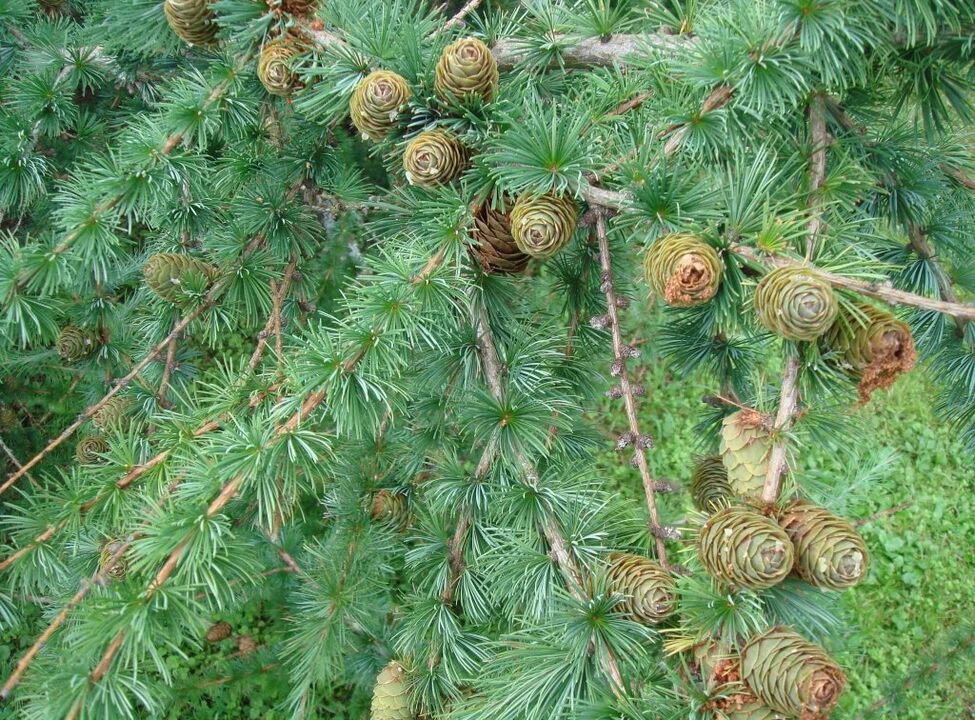
potato
Potato tubers are used to treat varicose veins. To make a compress, a few washed and dried potatoes are rubbed with a fine grater (along with the peel). The freshly prepared mass is applied to the affected area with a thick layer and wrapped in several layers with a cotton cloth. Keep the compress for 4-6 hours. The course of treatment is 1, 5-2 months.
Juices
Many folk recipes for varicose veins in the legs include juices. In addition, when freshly squeezed, they can significantly reduce the manifestations of the disease and serve as a prophylaxis of VRV. The most effective of them:
- carrots;
- beets;
- parsley juice;
- spinach leaf juice;
- juice of celery branches.
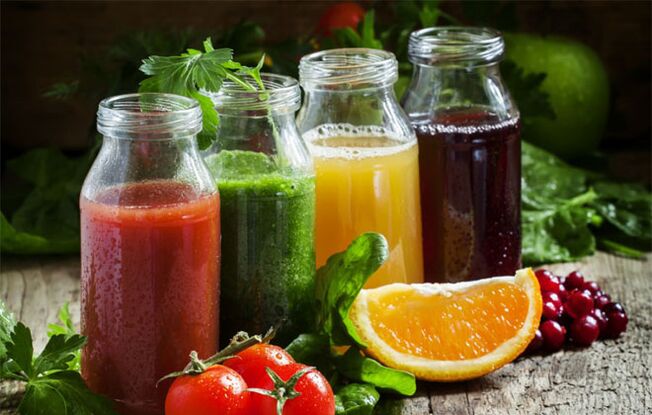
Ginger
A good result with varicose veins is treatment with external and oral ginger. Used as a tea or infusion for internal use. To make tea, cut a few thin rings (7-10 g) from the root and pour 0. 5 liters of boiling water. Insist 15 minutes.
The use of ginger root is most effective when the disease is triggered by overweight and metabolic disorders. In men, it is recommended to treat varicose veins with ginger, because the root of this plant additionally normalizes the functioning of the male reproductive system.
For external use, ginger root should be rubbed finely, mixed with honey (1: 1) and applied to the inflamed area for 4-5 hours. Top with wool fabric. Burdock or cabbage leaves are used instead of compress paper. The course is 1-2 months.
viburnum
With the help of viburnum berries you can treat varicose veins at home, you can use them in the form of compresses or medicinal drinks. To make a compress, viburnum is rubbed through a strainer, applied to a piece and applied to the affected areas, wrapped in a film and fastened with a bandage. The course is 3-4 weeks.

For oral administration, viburnum juice is mixed with honey. Take 2 tablespoons for 0. 5 liters of water. l. (without slides) honey. Take a drink before meals for 2 tbsp. l. 3-4 times a day. The course is 1, 5 months.
Lemon
You can treat varicose veins with lemon and use it to make an anesthetic compress. To make a compress, lemon is cut into circles and applied to inflamed veins, covered with a film and fixed with a bandage. The course is 2-3 weeks.
Honey and bees
The healing properties of honey and other bee products have been used for centuries. Regular use of natural honey facilitates the course of VRV, while honey constricts blood vessels and closes the body, eliminates inflammation and improves the appearance of the skin.
Apitherapy
Apitherapy includes propolis, honey, bee's milk, bee venom, pollen, subpestilent, wax, zabrus, etc.
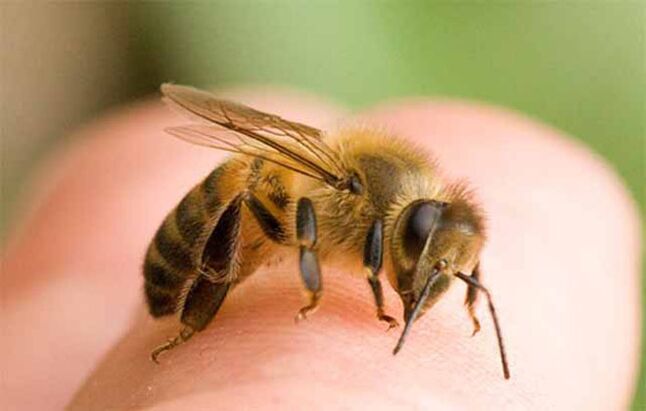
Propolis
Antimicrobial propolis, which contains natural antiseptics, vegetable oils and essential resins, is used to treat varicose veins at home. Used in the form of tinctures and ointments. To prepare the tincture, 100 g of raw material is crushed and poured into 0, 3 liters of alcohol or vodka. Infuse for 1 month in a dark glass bowl, shaking occasionally. Apply in the form of compresses and lotions.
bee subpestile
Dead bees are used to make restorative compresses. To do this, take the required number of dead bees (depending on the size of the affected areas), pour boiling water over them and infuse for 20-30 minutes. After that, the water is drained and the steamed bees are applied to the inflamed veins, wrapped in a film and insulated with a tight cloth. It is recommended to make a compress at night. The course is 1-1, 5 months.
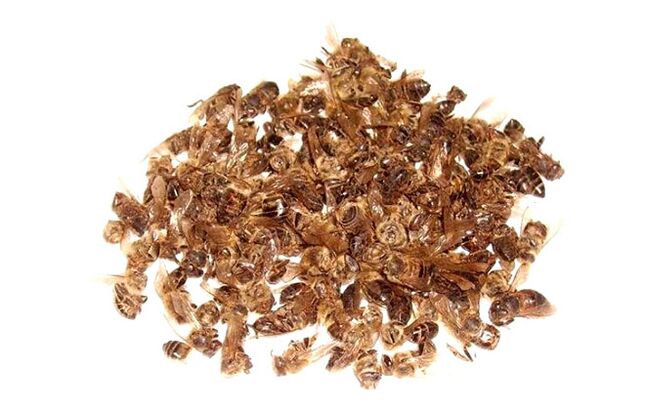
What else is useful
There are many ways to treat and prevent varicose veins with folk remedies, you can choose the most suitable of them. Alternative methods are used as adjuvant therapy at any stage of VRV, but the greatest effect is achieved in the early stages of the disease.
Apple cider vinegar
Apple cider vinegar contains more than 20 components that have a beneficial effect on blood vessels. Gives a lasting healing effect with regular useIt is used in the form of dressings, compresses, baths, in addition, it is taken orally. It is most useful in the early stages of VRV.
The easiest way is to rub the inflamed areas with apple cider vinegar. Moisten the problem areas several times with a cotton swab (easily, without pressure). It is not necessary to cover the treated area of skin. The procedure is performed 3-4 times a day for 1 month.
To be sure of the quality of fruit vinegar, it is better to cook it yourself from local varieties of apples (it will even carcass).
Nutmeg
A powerful tool such as nutmeg is used for non-surgical treatment of varicose veins. It is taken as a powder, alcohol tincture, tea, nutmeg-honey mixture or beverage. It is most useful in the early stages of the disease. Take fresh nutmeg powder, 1 tsp. 30-40 minutes before the first meal (without top). You can dilute it with boiling water and add a little honey. Drink hot for a month.
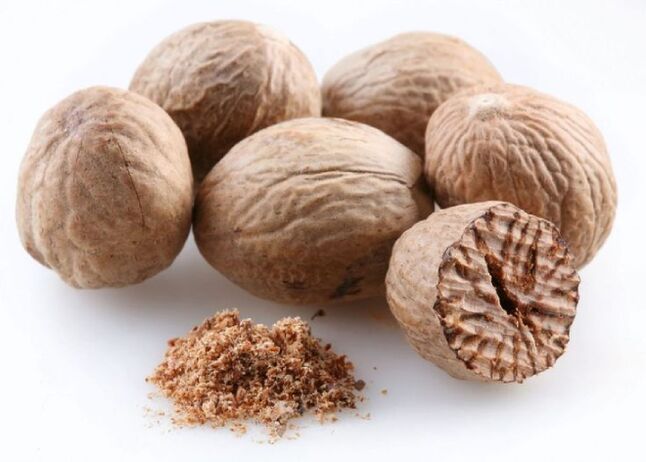
Pumpkin
The inner fibrous pulp of the pumpkin is used as an adjunct therapy in all stages of the disease. The fibers are released from the seeds and applied to the inflamed areas. It is better to use burdock or cabbage leaves instead of compress paper. From above, the compress is insulated with a woolen cloth and left overnight. The course of treatment is 1, 5-2 months.
In addition, with venous edema, it is necessary to include vegetables in the diet regularly and fast on a pumpkin 2-3 times a month.
Fish oil
As an adjunct therapy for varicose veins in women, folk remedies indicate the use of fish oil. When taken orally, it helps to lose weight and normalize metabolism. Fish oil is a reliable tool to prevent osteoporosis in both menopause and postmenopause.
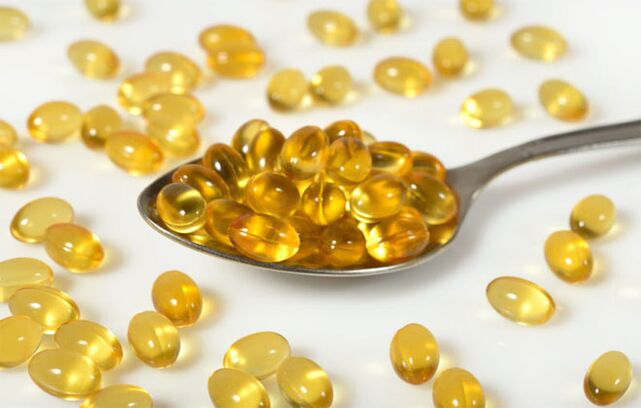
Good effect in the treatment of VRV is given by dressings based on fish oil and honey. The components are mixed in a 1: 1 ratio. With this composition, a natural linen fabric is impregnated and wrapped in a leg for the night. The top is covered with compress paper and secured with a tubular bandage.
Hydrogen peroxide
Traditional medicine offers many ways to treat VRV with hydrogen peroxide. Proponents of these methods note the positive effect of the simplest peroxide on the condition of blood vessels. Representatives of traditional medicine speak vaguely about these treatments, thinking that they are not sufficiently studied and therefore dangerous. The use of hydrogen peroxide, even in the form of compresses, is necessary after consulting your doctor.
Iodine
Iodine can be used as a folk remedy for the treatment of varicose veins. This method shows good results in the early stages of VRV. In the absence of allergies to the chemical element, iodine mesh is applied to the affected areas for 2-3 weeks before bedtime. The course is repeated in another 2-3 weeks. After treatment with iodine, blood circulation improves and inflammatory foci are eliminated.
Salt
For varicose veins, salt is used in the form of saline dressings and baths. To prepare the dressing, sea salt should be diluted with water, placed on a cotton cloth in a layer of 1-2 cm and applied to inflamed veins. Keep the bandage for 3-4 hours. The course is 1 month.
soda
A good result with varicose veins of the lower extremities (in the initial stage) is the use of soda baths. In the presence of large affected areas, it is recommended to take soda baths. For the bath (200 l), 7 tbsp. l. soda previously diluted in a small amount of warm water (with a medium slip). The duration of the procedure is 15 minutes, the water temperature is +37. . . It should not exceed + 40 ° С.
As a result, all blood vessels heal. After taking a bath (without wiping your body), you need to wrap yourself in a towel and rest for half an hour. Procedures are performed every day. On non-procedure days, apply a moisturizer to the body.
Laundry soap
Traditional medicine offers another way to treat VRV, it is effective and safe. Only use natural laundry soap (no additives). Used in the form of compresses, lotions and ointments.
Anti-varicose massage is applied with soapy foam. In addition, you can apply a thick foam to the affected areas and leave it on all day. Wash before bed. The course is 3-4 weeks. If itching, irritation, or peeling appears after the procedure (for sensitive skin), treatment should be stopped.


















